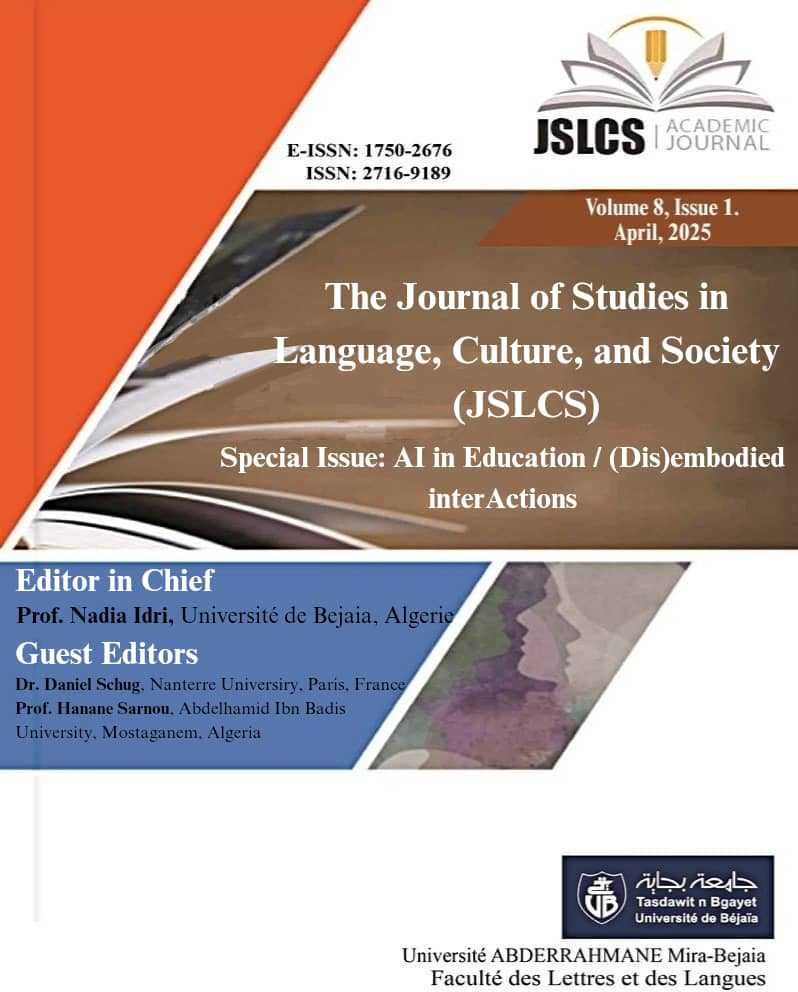Enhancing Efl Learners' Critical Thinking Through Human Communication And Human Discussion Activities In The Era Of Ai
Keywords:
Critical Thinking, human Communication, AI-Assisted Learning, discussion-Based Activities, EFL LearnersAbstract
This study investigates the role of human communication and discussion activities in fostering critical thinking among EFL learners, particularly in an era increasingly influenced by artificial intelligence (AI). While AI-powered tools offer language learners unprecedented access to information and automated feedback, they often lack the humanistic and interactive dimensions essential for developing higher-order thinking skills. This research examines how face-to-face discussions and communicative activities can complement AI-based learning by enhancing students' ability to analyze, evaluate, and articulate ideas critically. The study was conducted with a sample of 100 undergraduate EFL students and 6 instructors at Djillali Liabes University, Algeria. A mixed-method approach was employed, using questionnaires, interviews, and classroom observations to explore students' engagement in discussion-based learning. Findings reveal that while AI tools support certain aspects of language acquisition, students struggle with expressing ideas critically, engaging in debates, and developing autonomous reasoning. Teachers also highlighted the importance of balancing AI-driven instruction with interactive human communication to cultivate critical thinking skills effectively. This research underscores the necessity of integrating discussion-based activities alongside AI-assisted learning to foster both linguistic proficiency and cognitive development in EFL students.
References
Brady, M.(2008).Cover the material-Or teach students to think?. Educational Leadership, 65(5), 64.
Cottrell, S. (2017). Critical thinking skills: Efective analysis, argument and reflection (Vol. 100). Bloomsbury Publishing.
Ennis, R. H. (2018). Critical thinking across the curriculum: A vision. Topoi, 37, 165–184.
Carr, N. (2008). Is Google making us stupid? The Atlantic.
Facione, P. A. (2011). Critical thinking: What it is and why it counts. Insight assessment, 1(1), 1-23.
Garrison, D., & Anderson, T. (2003). E-Learning in the 21st century: A framework for research and practice. London: Routledge/Falmer.
Guffey, M. E., & Loewy, D. (2015). Business communication: Process & product (8thed.). Stamford, CT: Cengage Learning.
Mahyuddin, R., Lope Pihie, Z. A., Elias, H., & Konting, M. M. (2004). The incorporation of thinking skills in the school curriculum. Kajian Malaysia, 22(2), 23-33.
McCarthy, M., & O'Keeffe, A. (2004). 2. Research in the teaching of speaking. Annual review of applied linguistics, 24, 26-43.
Narayanarao, H. L. (2012). Cultural Studies On Emotions And Communication Skills In English. Cultural Studies, 3.
Narayanrao. H.L.(2012) Asian Journal of Managment Research. Online Open Access publishing platform for Management Research. 3(1).
Paul, R., & Elder, L. (2019). The miniature guide to critical thinking concepts and tools. Rowman & Littlefield.
Rayhanul, S. M. (2015). What are the Importance and Benefits of "Critical Thinking Skills"?. Retrieved 29 November, 2019 from https://www.linkedin.com/pulse/whatimportancebenefits-critical-thinking-skills-islam
Sternberg, R. J. (1986). Critical thinking: Its nature, measurement, and improvement National
Institute of Education. Retrieved from http://eric.ed.gov/PDFS/ED272882.pdf








